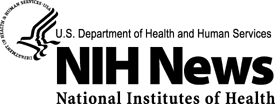 |
|
|
FOR IMMEDIATE RELEASE:
September 10, 1998 #98-19 10 Sep 1998: New Agency Group to Review Proposed Use of Skin Sensitivity Test Using Fewer AnimalsA scientific panel meets September 17 to review a less-animal-intensive test for Federal agencies and regulated industry to use to determine if products are likely to cause contact dermatitis. The test, if endorsed by the expert panel, would represent a success in the effort to reduce or eliminate the use of animals in testing. The endorsement would also be the first action of two new federal organizations designed to facilitate agreement on the use of so-called "alternative testing." The groups are a new, permanent committee of the federal agencies-the Interagency Coordinating Committee on the Validation of Alternative Methods (ICCVAM) (http://iccvam.niehs.nih.gov/) -- and of the new National Toxicology Program Interagency Center for the Evaluation of Alternative Toxicological Methods, which is headquartered at the National Institute of Environmental Health Sciences in Research Triangle Park, N.C. The expert panel's review, if favorable, would also be the key to putting the test into wide use. Each agency, however, would then separately follow through by proposing regulatory modifications that would make the new test an optional alternative for businesses and others trying to get new products approved. ICCVAM was established by NIEHS and other research and regulatory agencies:
The National Toxicology Program Center and an ICCVAM subcommittee, the latter co-chaired by scientists Denise M. Sailstad of EPA and David G. Hattan at FDA, have organized the review of the alternative test, which is called the Murine Local Lymph Node Assay. The assay, or test, uses mice instead of guinea pigs-and requires half to a third as many, and can be done in a week as opposed to three to four weeks. In the old test, the product was painted on the body and the guinea pig was then injected with an additional, potentially irritating chemical to help accentuate the test chemical's effect. In the newer test, the mouse's ears are painted with the test substance and its immunological response is determined by looking at lymph node tissue. The animal does not have to get challenge-induced contact dermatitis. "If you have a chemical that's an allergen," according to a scientist who has worked with the test, "it stimulates the immune system so cells divide, and that's what we're looking at." The newer test also costs about half of the old. It was first conceived by Ian Kimber, head of research at the Zeneca Central Toxicology Laboratory in England, and it was submitted as an alternative by three scientists from private industry. Tests from five different laboratories working with FDA were published this year. The review, which is open to the public, will be from 8:30 a.m. to 5:30 p.m. Sept. 17 at the Gaithersburg Hilton, 620 Perry Parkway, Gaithersburg, Md. Copies of the proposed LLNA Test Method may be obtained by writing the NTP Center for the Evaluation of Alternative Toxicological Methods, MD EC-17 at NIEHS, PO Box 12233, Research Triangle Park, NC 27709, or be telephoning (919) 541-3398 or faxing (919) 541-0947. Contact dermatitis is a major problem for consumers of many products, including cosmetics and household products. It is also the second most common occupational disease, costing industry and workers as much as $1 billion annually if lost workdays and associated loss of productivity are included. In industry, irritant contact dermatitis is the most common, usually resulting from reactions to chemical irritants such as solvents and cutting fluids. In addition, there is allergic contact dermatitis caused by a variety of substances, from latex to some pesticides, that trigger an allergic, or delayed hypersensitivity, reaction. Director of NIEHS and NTP Kenneth Olden, Ph.D., said, "As we seek to reduce the numbers of animals used in testing, we realize too that improvements in test methods can translate directly into fewer injuries to the public and in the workplace. Good, accurate tests are an important tool of disease and injury prevention. " # # # # UPDATE!!Panel Endorses Test Using Fewer Lab Animals Subsequent to the September 10 press release, an expert panel formed by federal government agencies has endorsed a less-animal-intensive test called the Murine Local Lymph Node Assay to identify products that may cause allergic contact dermatitis in workers and consumers. The test uses only half to a third as many animals as the old test. The alternative test was recommended by a peer review panel of expert scientists that met in Gaithersburg, Maryland, in September. The panel was formed by a new, permanent federal committee, the Interagency Coordinating Committee on the Validation of Alternative Methods (ICCVAM) and the NTP Interagency Center for the Evaluation of Alternative Toxicological Methods. Bill Stokes of NIEHS is the director of the newly created NTP center (NICEATM) and co-chairs ICCVAM with Richard Hill, senior science advisor at the Environmental Protection Agency . Dori Germolec in the Toxicology Branch at NIEHS served on the ICCVAM Interagency Working Group that coordinated the scientific peer review with the NTP Center. Besides NIEHS/NTP, the ICCVAM participants include research agencies such as the National Cancer Institute and regulatory agencies such as the Food and Drug Administration, the Labor Department's Occupational Safety and Health Administration, and the Environmental Protection Agency. These agencies are expected to follow through by proposing revisions in their regulations and testing guidance to provide for their own use of the test and for its use by regulated industry. A second animal-conserving test will be reviewed in January 1999. It is an in vitro method called Corrositex and is proposed as an alternative method to identify chemicals that are corrosive to skin. |
|


